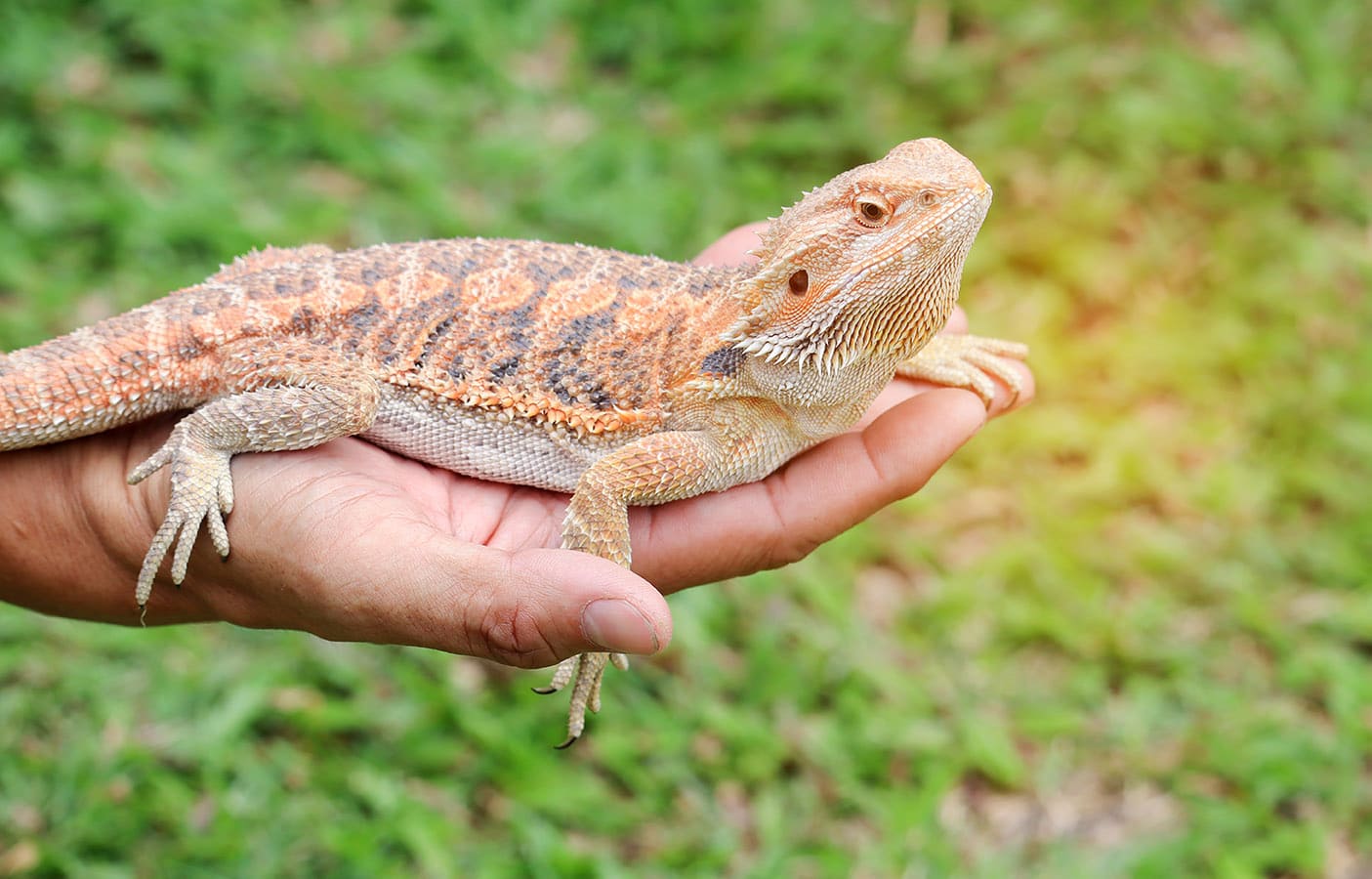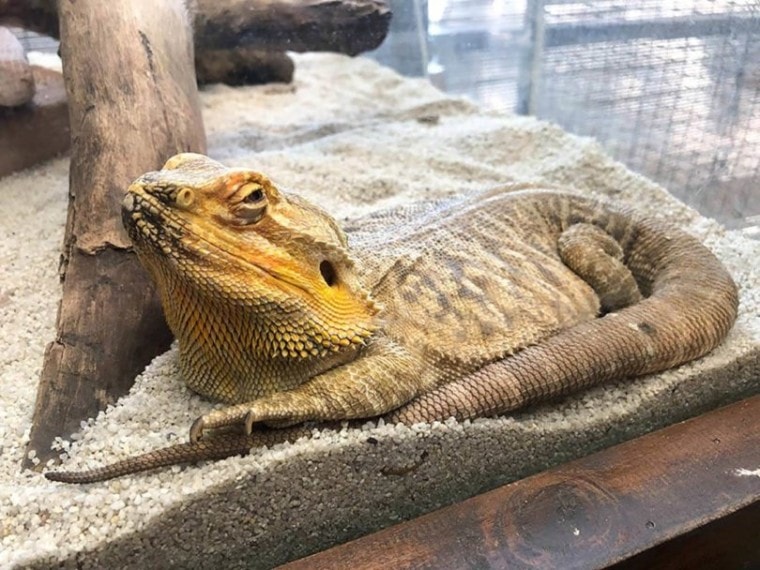
Bearded dragons (Pogona spp.) are one of the most popular lizard species to keep as pets. Also known as beardies, these lizards may look tough and rugged, but they’re docile, social, and gentle, often forming strong bonds with their human keepers.
If you currently own a beardie or are considering adopting one, there’s likely to be much you don’t yet know about these adorable lizards. Read on to find 15 fascinating facts about beardies so you can expand your knowledge and be better prepared to care for your pet.
The 15 Facts About Bearded Dragons
1. They Can Wave

New bearded dragon owners are often surprised when their beardie makes eye contact with them from inside their enclosure, lifts a front leg, and waves to them robotically. While this behavior would be adorable if the lizard were doing it to say hello, they don’t actually do it as a greeting. When beardies wave, they are widely thought to be showing submission. Your pet acknowledges that you’re far bigger than they are and waves to let you know you shouldn’t feel threatened by their presence.
2. They Don’t Have Beards
Despite what their name would try to convince you, bearded dragons don’t have beards. Their name comes from the dewlap and spiny projections found under their necks that resemble a beard. When beardies feel a certain way (often stressed out or afraid), they may puff out these projections and open their mouths to make themselves look bigger.
When they feel threatened, their beards can even turn black, potentially making them look scarier and more intimidating to potential predators. However, the black colour can also be due to readiness to mate or illness.
3. They Can Switch Sexes (while incubating)

Wild bearded dragons don’t live a very easy life. They’re native to Australia and need to contend with temperatures up to 113°F (45°C), survive droughts and rainfall cycles that last years, and avoid predators like feral cats and other lizards. It is possible that producing more female offspring helps the species survive these harsh conditions.
So, chromosomes can determine sex just like in humans, but females can also be produced by a temperature-dependent sex reversal, where a developing male embryo’s chromosomes can be overwritten if they are incubated at higher temperatures. Reproductively, these sex-reversed offspring behave like females but interestingly their looks and behavior are slightly more masculine.
4. They Can Change Color
Bearded dragons can change colors on specific parts of their body depending on the temperature and what they communicate to other bearded dragons.
The chest and beard areas can change from a cream color to jet black when they socialize. These color changes can also be accompanied by behaviors such as head bobs and push-ups.
The colors on their back can change during temperature regulation. They can switch to a darker shade during cooler temperatures, allowing them to reflect less light and absorb more heat energy.
A beardie’s overall wellness and stress levels can influence their colors, too. They may turn black when they’re feeling stressed and change color during illness.
5. They Are Native to Australia
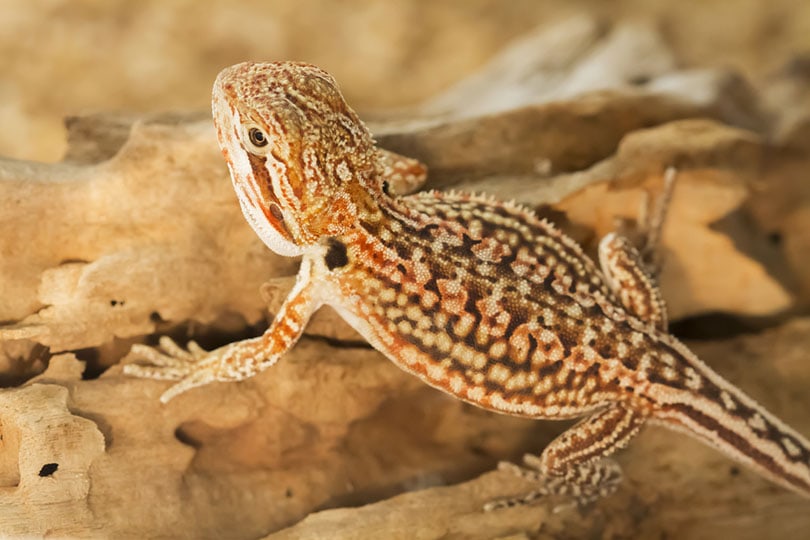
Bearded dragons are native to central Australia and inhabit deserts and shrublands, though some prefer living in forests. They spend most of their waking hours in bushes and trees and basking on rocks. However, when it is extremely hot, bearded dragons will burrow underground.
All beardies you’ll find in the United States have been bred in captivity.
6. They Are Solitary Creatures
Beardies are solitary creatures and do not benefit from being kept in pairs or groups. Keeping more than one beardie in an enclosure can cause stress and may lead to aggression and fighting. They do not crave company from conspecifics like other companion animals, so you shouldn’t ever feel like you need to get your beardie a friend to keep them company.
7. They Are Social (with people)
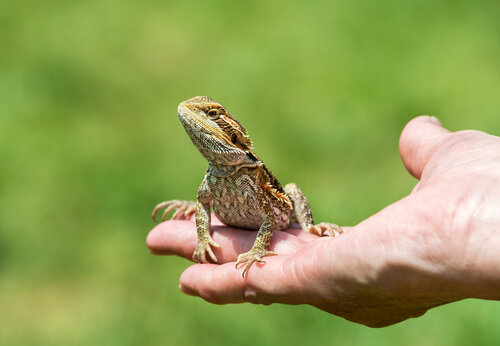
Don’t let their solitary nature fool you, though; bearded dragons are social creatures when it comes to people. They are generally very friendly, curious, and gentle, all traits that make them fantastic pets. They are easy to tame and responsive to their owners. Beardies tend to form bonds with humans quickly and can make great pets for families with older children who can understand boundaries and handle them.
8. They Are Intelligent
While beardies may not be the most intelligent creatures on earth, studies show they are still smart.
A study from 2015 shows that beardies can learn new skills through imitation, a skill that was once thought only to apply to certain primates.
Another study showed that bearded dragons could perceive the Delboeuf illusion, an optical illusion of relative size perception. Researchers presented beardies with two different-sized plates containing an equal amount of food. The beardies chose the smaller plate more often than the larger one, which may prove that they fell for the illusion, interpreting that the smaller plate contained more food. This was the first study that showed this behavior in any reptile species.
9. They Can Sleep Standing Up
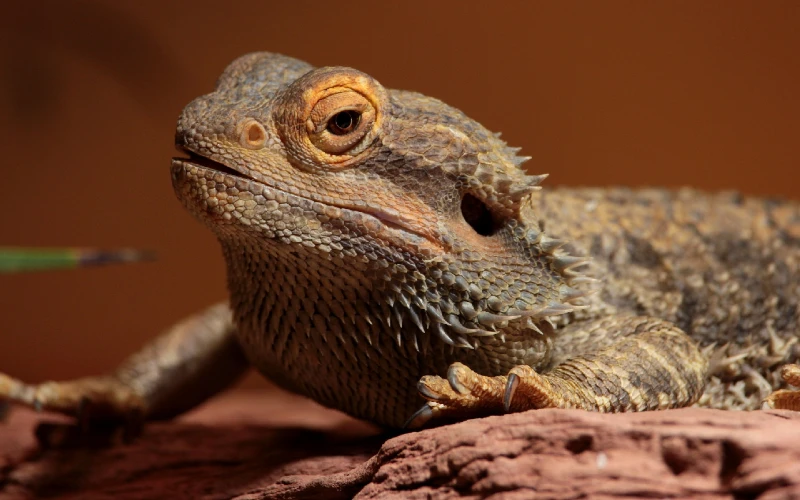
Ask anyone who has kept bearded dragons for any length of time, and they’ll probably be able to recall fondly the first time they ever saw their beardie sleeping standing up. I know our beardie, Ripley, stood to sleep for the first time just a week or two after we brought him home. He just stood in the corner of his enclosure, tiny arms splayed out on the glass, and we couldn’t believe he could sleep like that!
Though no one knows for certain why this upright posture seems to be a preferred sleeping position for some beardies, it doesn’t seem to be a cause for concern.
10. They Can Run Faster Than Most Humans
According to Strava, a smartphone app that tracks exercise, the average human’s running speed is about six miles per hour. Despite their somewhat laidback and sedentary lifestyle, bearded dragons can reach speeds of up to nine miles per hour if necessary! This is quite fast for such a small animal, but these speeds play an important role in how beardies survive in the wild.
11. They Can Run on Two Feet
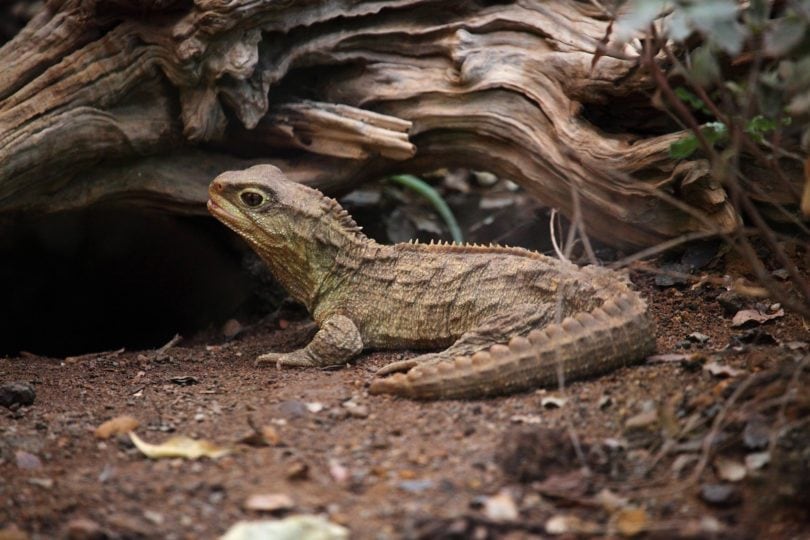
While we’re on the topic of running, bearded dragons can stand on their hind legs and run. This funny running posture allows them to hit their top running speed to escape predators and allows them to run further by allowing the air to cool them as they make their getaway.
12. They Have a Third Eye
Beardie owners learn quickly about approaching them from the right angle. If you try to scoop up your pet from above, you may find that they hiss or their beards puff up and go black. This is because of their third eye.
The third eye—or parietal eye—is much like the beardie’s lateral eyes in that it has a similar structure, containing a cornea, lens, and retina. Unlike their normal eyes, though, the parietal eye isn’t connected to the beardie’s optic nerve but is instead connected to the parietal gland through the brain’s pineal gland. The third eye doesn’t send signals to the beardie’s optic center but instead to the pineal gland.
So, what does the third eye do? It’s primarily used to detect light, temperature, and shade differences. This is why, when you approach your lizard from above, it puffs up, turns black, or hisses as it senses your shadow and sends a message to the beardie that a predator is above.
The third eye also regulates biological processes, helping your beardie to know when it’s time to wake up and go to sleep.
13. Their Urine Is Not Liquid
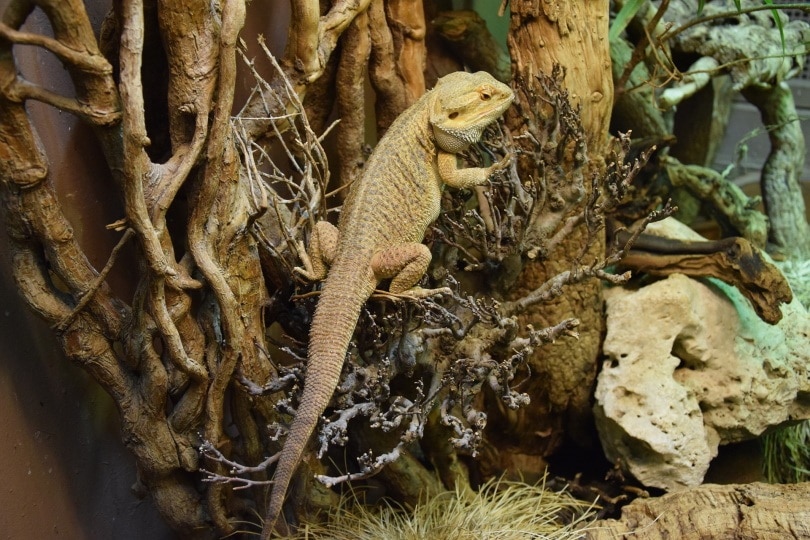
Bearded dragons do not urinate liquid. Instead of releasing toxins and waste in liquid form like most other animals, beardies produce a dry, white, powdery substance known as uric acid. They eliminate uric acid in a solid white block (urate) at the end of their bowel movement. The reason for this appears to be related to their homeland of Australia. Because they come from the desert, they don’t get many opportunities to drink the water necessary for survival. This means that beardies have to make the most out of the water they do have available to them by retaining as much of it as possible.
14. They Regulate Temperature Through Their Mouths
When bearded dragons reach their optimal temperature and are ready to cool down, they open their mouths to let escape. This open-mouth posture allows them to cool down the same way we sweat to regulate our body temperature. This can also be due to stress, so if you notice your bearded dragon doing this a lot, take action to help or contact an exotics veterinarian if the behavior continues.
15. They “Pancake”
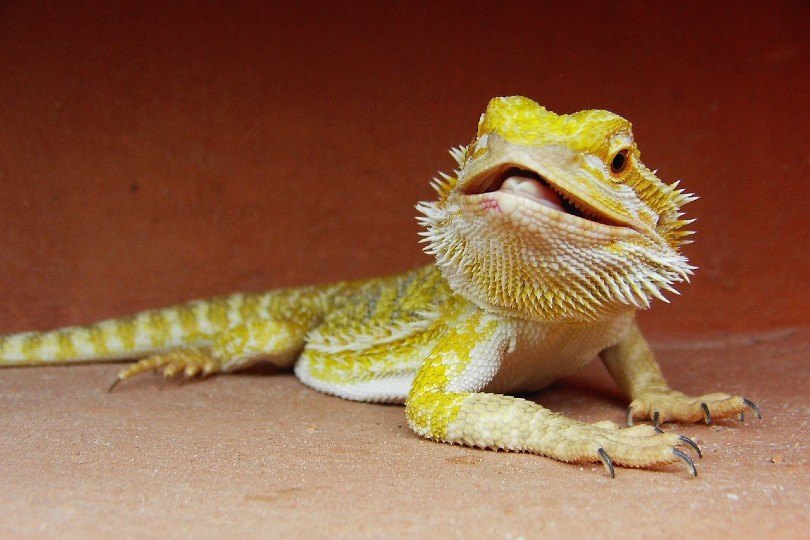
“Pancaking” is an adorable term that’s used when bearded dragons flatten out their bodies, giving them the appearance of a large, flat flapjack. The reason they pancake is, again, to help with heat absorption and temperature regulation.
Beardies are ectothermic, meaning they rely on their environment to help them maintain their body heat. When the sun (or your heat lamp) warms the surfaces in a beardie’s environment, the lizard will pancake, increasing their surface area and helping them to absorb the heat.
Final Thoughts
There certainly is no shortage of interesting details about bearded dragons. We hope our list of facts has taught you something you didn’t know, like how beardies can change their sex or why they pancake or wave.
See Also:
- Do Bearded Dragons Have Teeth? Interesting Facts & Care Tips
- Bearded Dragon Brumation Explained: Purpose, Signs & Care
Featured Image Credit: Kevin Khoo, Shutterstock



